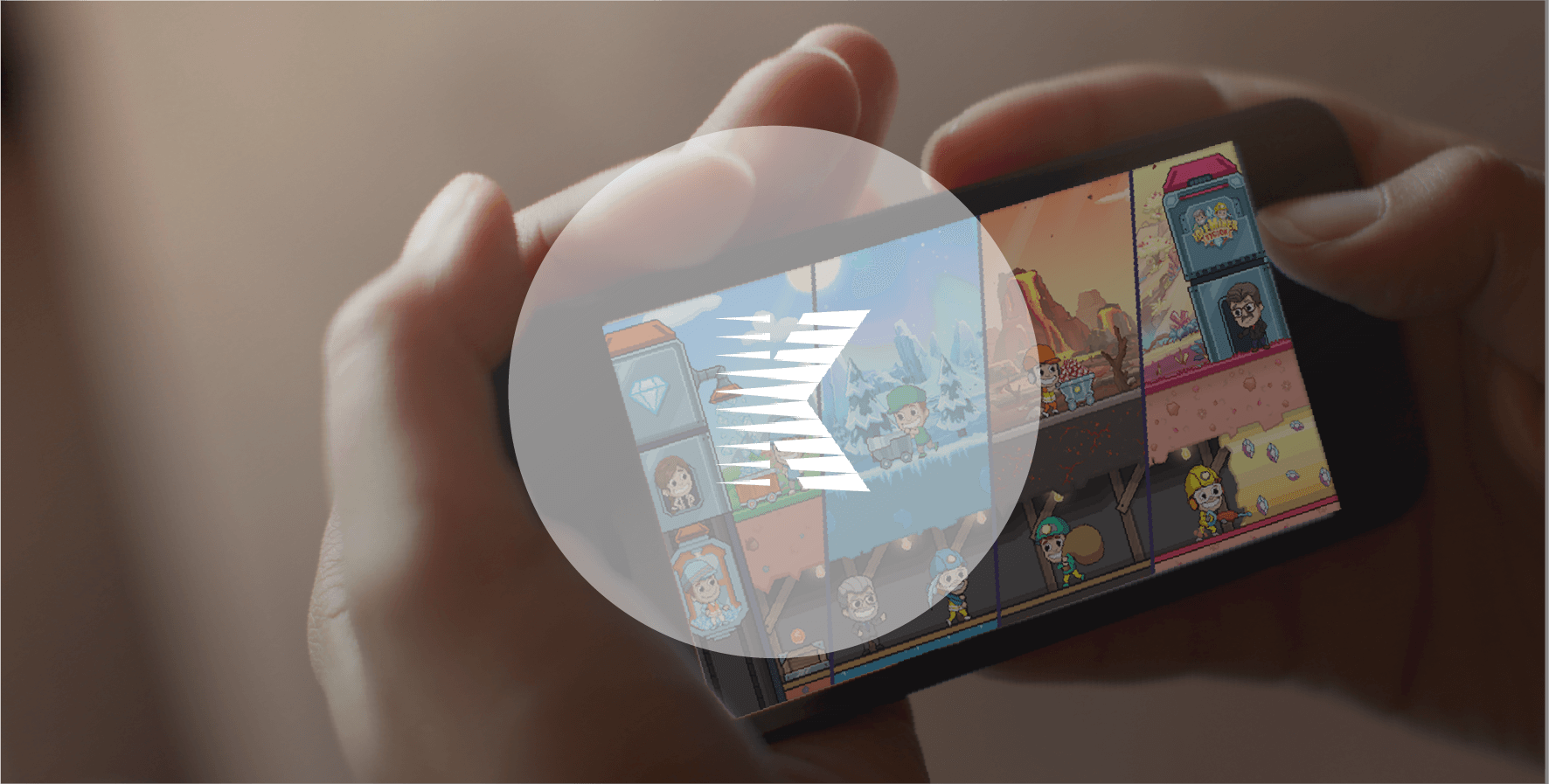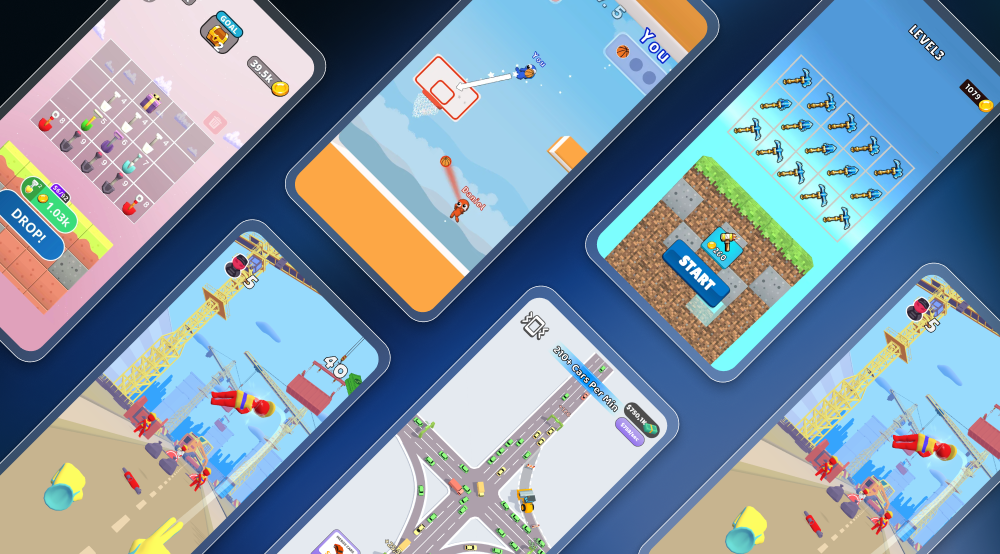Idle games are an exciting genre that is quickly rising to fame. What makes idle games so great - from both a player and developer perspective - is that their mechanics create optimal mobile sessions while simultaneously driving long-term retention.
ironSource spoke with Nate Barker, Director of Business Development at Kolibri Games, and discussed all things related to the idle game genre. Ironically enough, our conversation was anything but idle.
What are idle games?
Simply put, idle games allow players to progress even while they’re not actively playing the game.
Also known as incremental games, self-playing games, and idle clicker games, their internal workings are very basic: developers put a system in place that runs on a loop, slowly growing over time while requiring players to return to the game for “upgrades.” These upgrades make it so that the “business” - or whatever the user is tasked with doing in the game - works faster and more efficiently. The mechanics of these games drive long-term retention.
For example, imagine you’re playing an idle game that required you to run a lemonade stand. You could stick with your basic stand and get minimal money from your lemonade business, or you could continue “upgrading” your stand - to say, a factory - and your payouts would increase tenfold. The growth in these games happens so fast that they become almost instantly addictive.
Who plays incremental games?
Nate and his team discovered that the audience for idle games tends to be male, between the ages of 18-44, and lives in the US and Western Europe.
Perhaps most surprisingly, idle gamers are usually hardcore and strategy players. Kolibri’s theory is that idle games are manageable and can be played simultaneously in rapid succession, while playing other games. In other words, a user who is playing a shooter game will play an idle game while they’re waiting for another match to start on their shooter game.
Why are idle games so popular?
Nate says, “idle games scratch an itch that players have.” They’re addictive because of their exponential return of investment - users love when games provide them with both collectability and completionism.
For example, in Kolibri’s hit “Idle Miner Tycoon,” users can collect and access a number of different mines, and then proceed to max them out in terms of value by activating their potential revenue.
Players want games that allow them to make small improvements over time, such as upgrades to their property in the game or new equipment. Idle games let players see these returns - as they normally bring about higher rewards, such as in-game currency - when they make their way back to the game.
Additionally, what makes them so great is that idle games are impossible to lose. They offer players a contrast from other genres that are more competitive by nature.
How can you monetize incremental games?
While it may sound obvious, focusing on retention is key. Nate suggests ensuring that your players have the best possible user experience, even at the expense of manipulative monetization tactics. “Always try to maintain a high star rating and D1 retention. Once you’re able to keep players around for longer, you’ll be able to try different and more creative monetization strategies.”
When all is said and done, developers should never force ads on their players. To keep users happy, you need to ensure that consuming ads is both easy and desirable. One way of doing this, as suggested by Nate, is to set up a rewarded video experience, which is thoroughly integrated into the gameplay. In fact, Kolibri’s players watch anywhere between 8 and 9 ads a day - an impressive number.
Additionally, Nate explained that the best way to provide users with value, is by utilizing monetization levers like time manipulation and payout multipliers. Initially, Kolibri tested giving players an additional in-game currency in exchange for watching a rewarded video ad, but they quickly realized that in-game currency was nowhere as effective as a reward that speeds up time. Turning a user pain point into a reward is a much more effective way to monetize your users.
Best practices for user acquisition
Developing a sound user acquisition strategy is key in order to ensure the success of your mobile idle game. Granularity is the most important aspect in marketing idle games. When optimizing your user acquisition strategy, Kolibri suggests using targeting capabilities, which will let you pay a different price for each individual ad publisher. Your CPI bid will be different according to each advertised app’s ROI, and the ironSource user acquisition platform will help you do this.
Keep in mind that the price of your bid shouldn’t come from thin air. For example, Kolibri calculates their bids by looking at ad monetization at the player level. Much like ironSource’s user level ad revenue solution, this enables Kolibri to compute a more complete player level LTV, which combines IAPs and ads.
Nate says that playable ads are the best way to showcase the “awesomeness of their games”. Kolibri works with our in-house creative Playworks studio to design and test their creatives. Playable ads highlight the most enjoyable features of a game - basically a “try before you buy” type ad unit - letting users interact with the main features of an app before they choose to install it.
Users who install an app after interacting with a playable are more likely to open the app later and continue to engage with it over time - creating more high LTV players. Nate and the team at Kolibri recommend running playables that are reasonably close to your gameplay, highlighting features that players tend to enjoy most, while skipping the wait times that are standard within mobile idle games.
Where are idle games headed in 2019?
Already, we’re seeing genres in the mobile game industry consolidating, such as the convergence of hyper-casual and casual games. Nate predicts that the industry is going to similarly see more consolidation between idle games and other genres. Especially since idle does best when paired with other genres, such as RPG, racing, or puzzle games.
Want to get your idle fix? We recommend trying out Idle Miner Tycoon (App Store & Google Play). I guarantee you’ll be addicted in no time.




